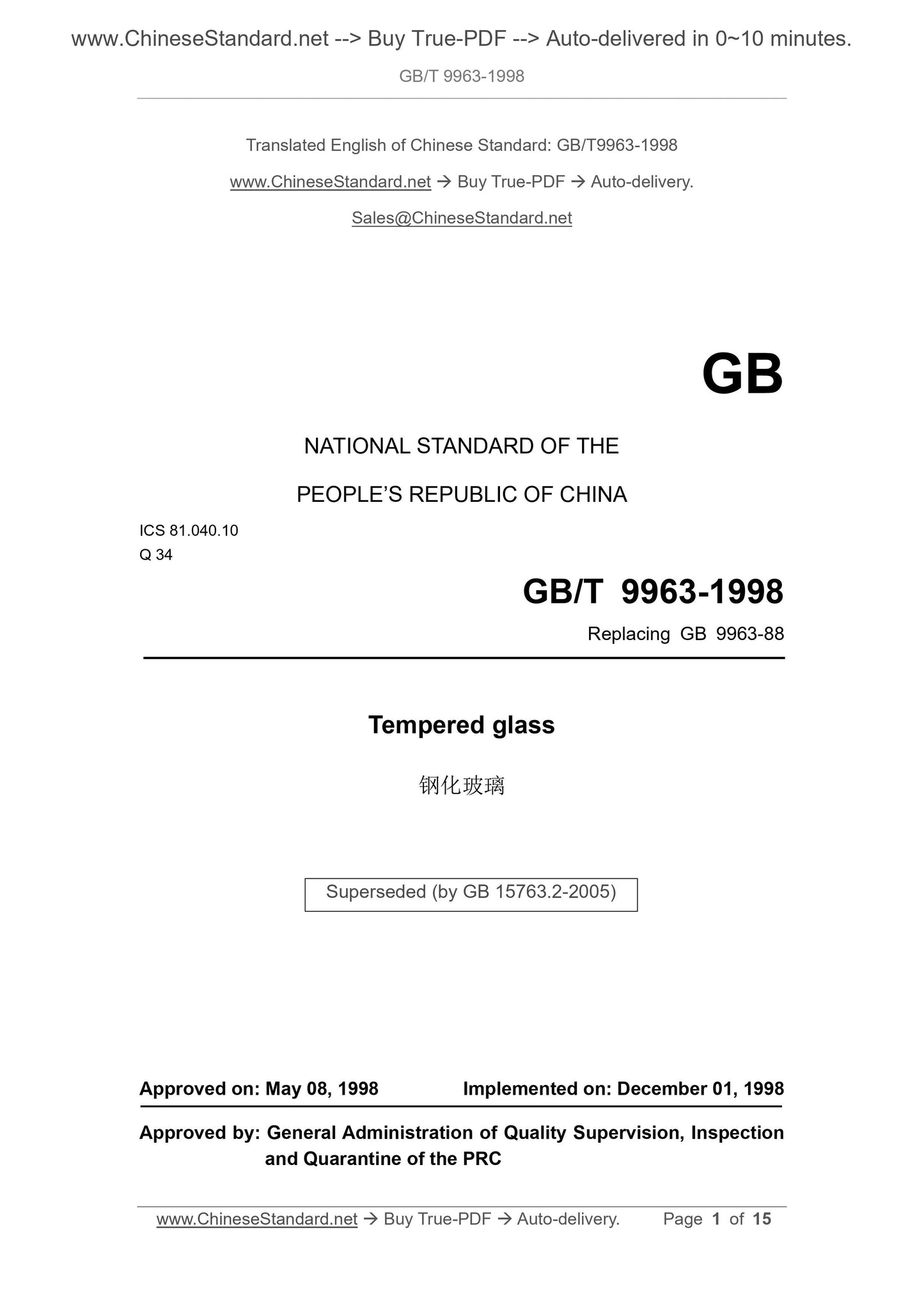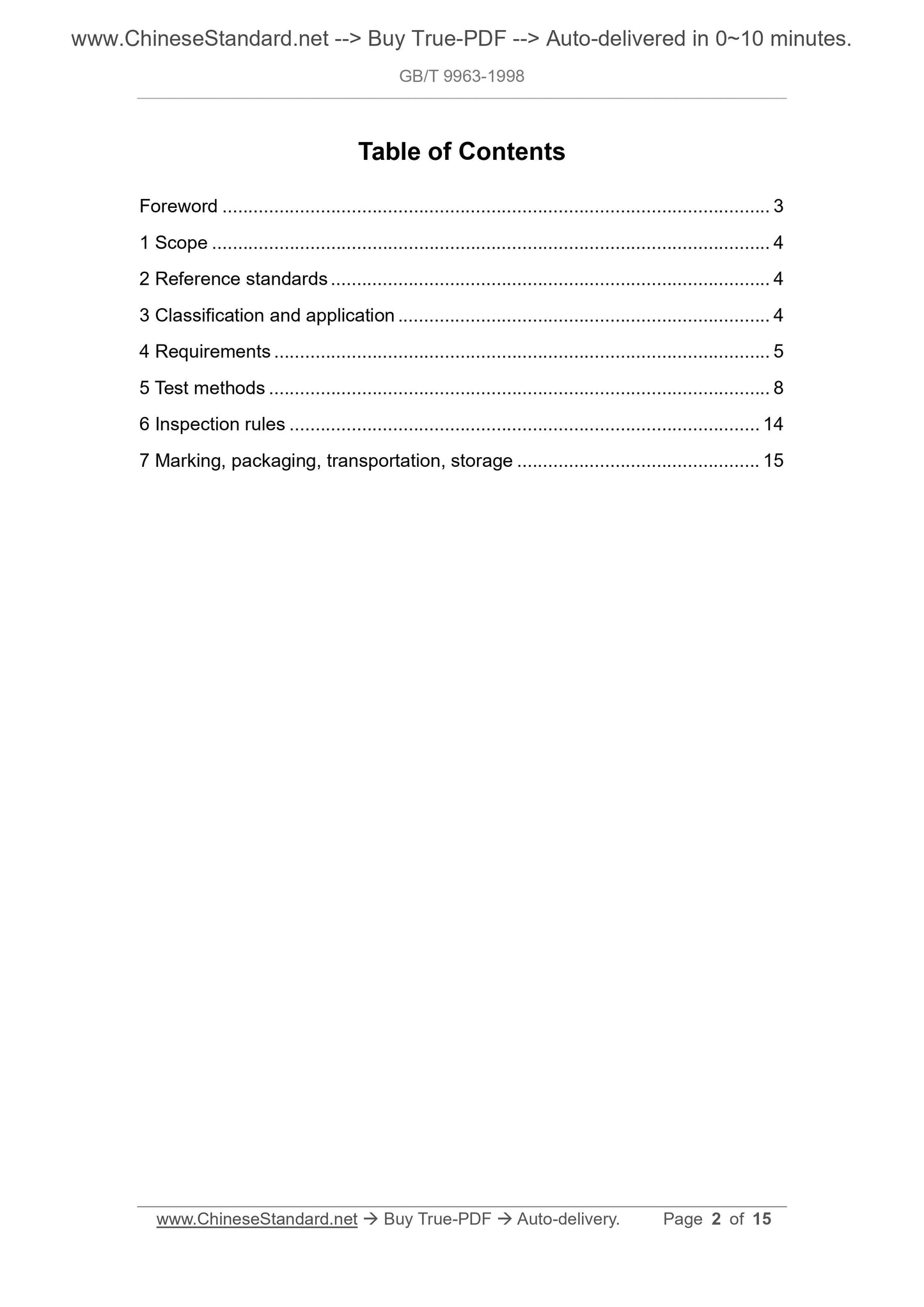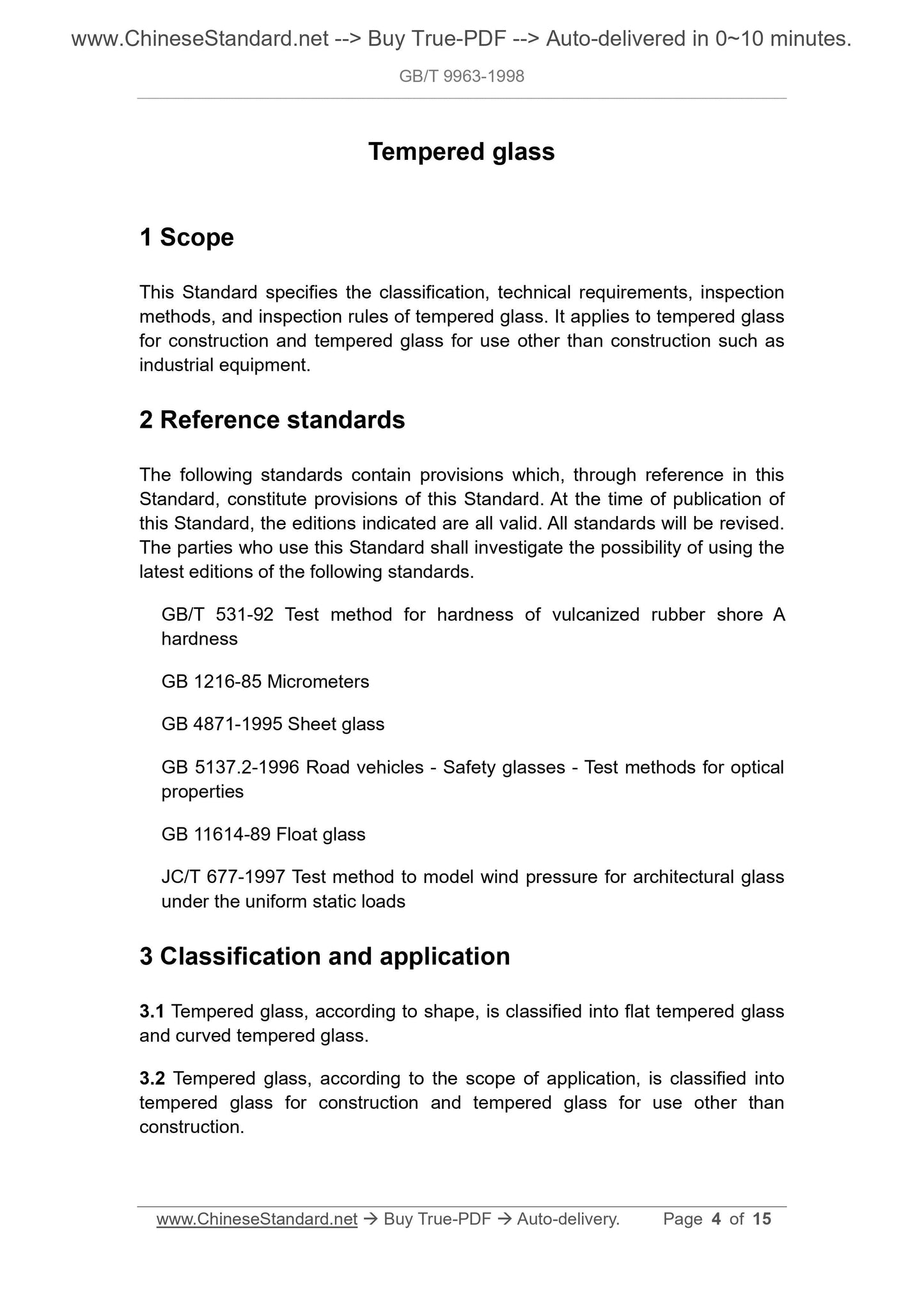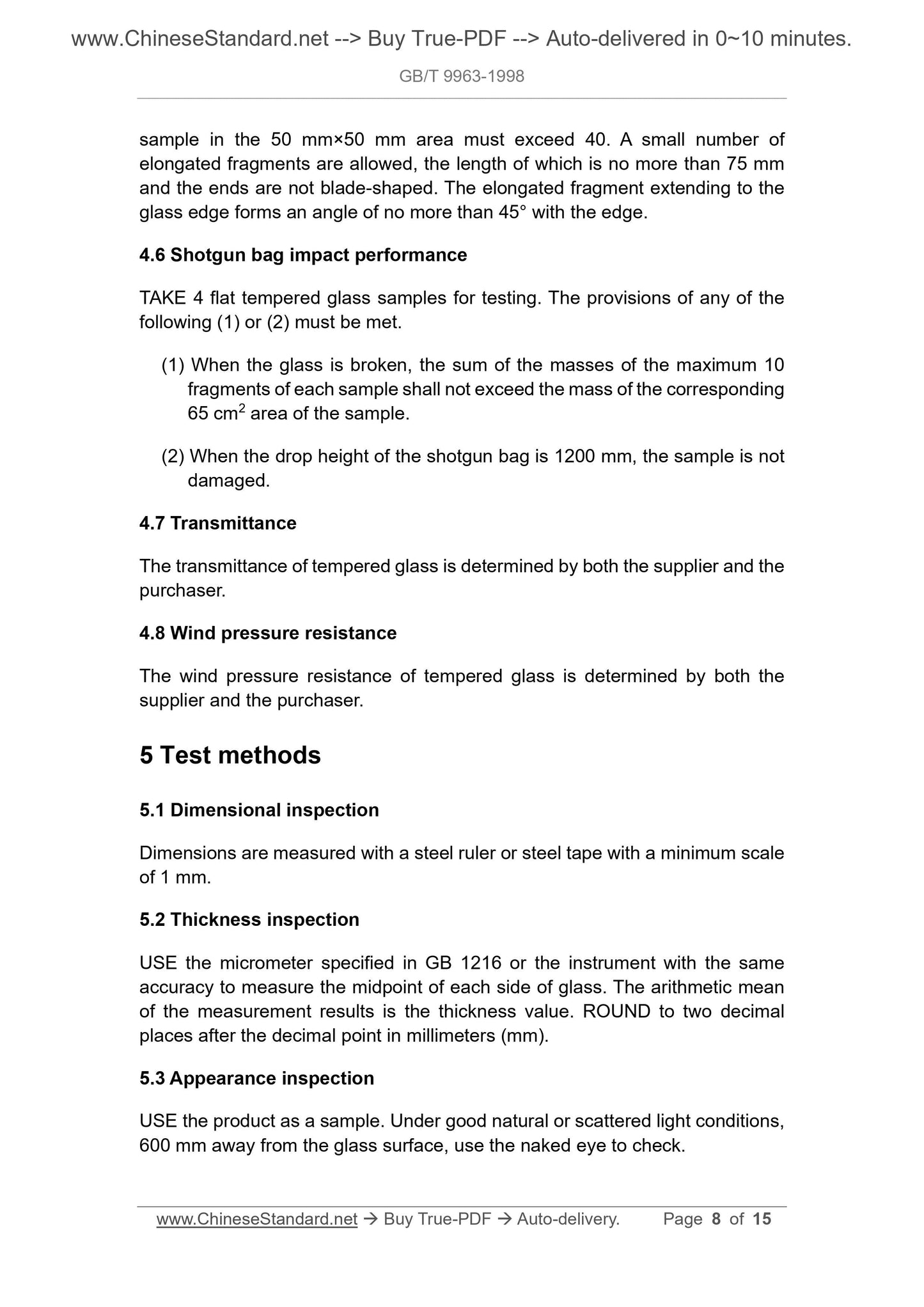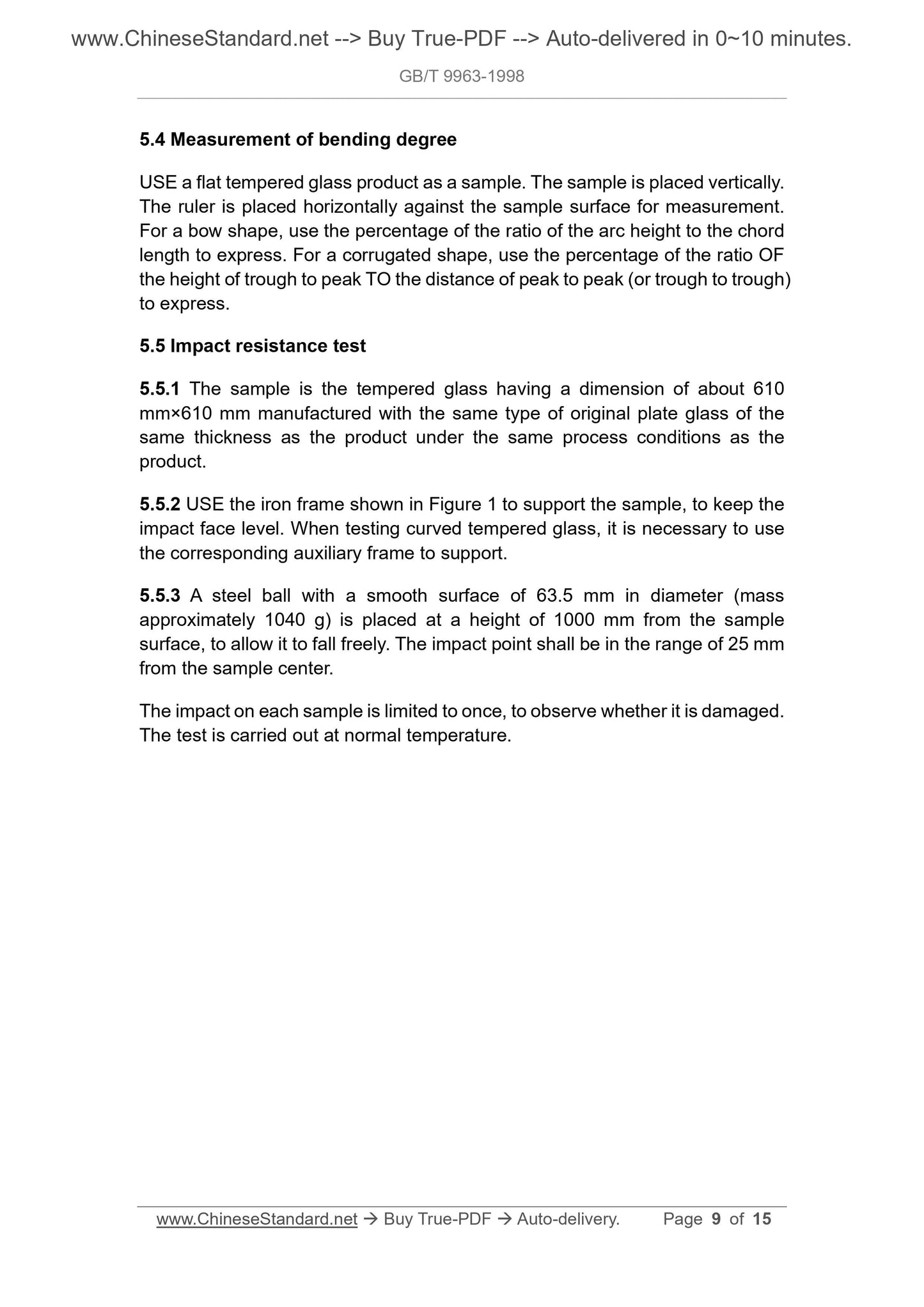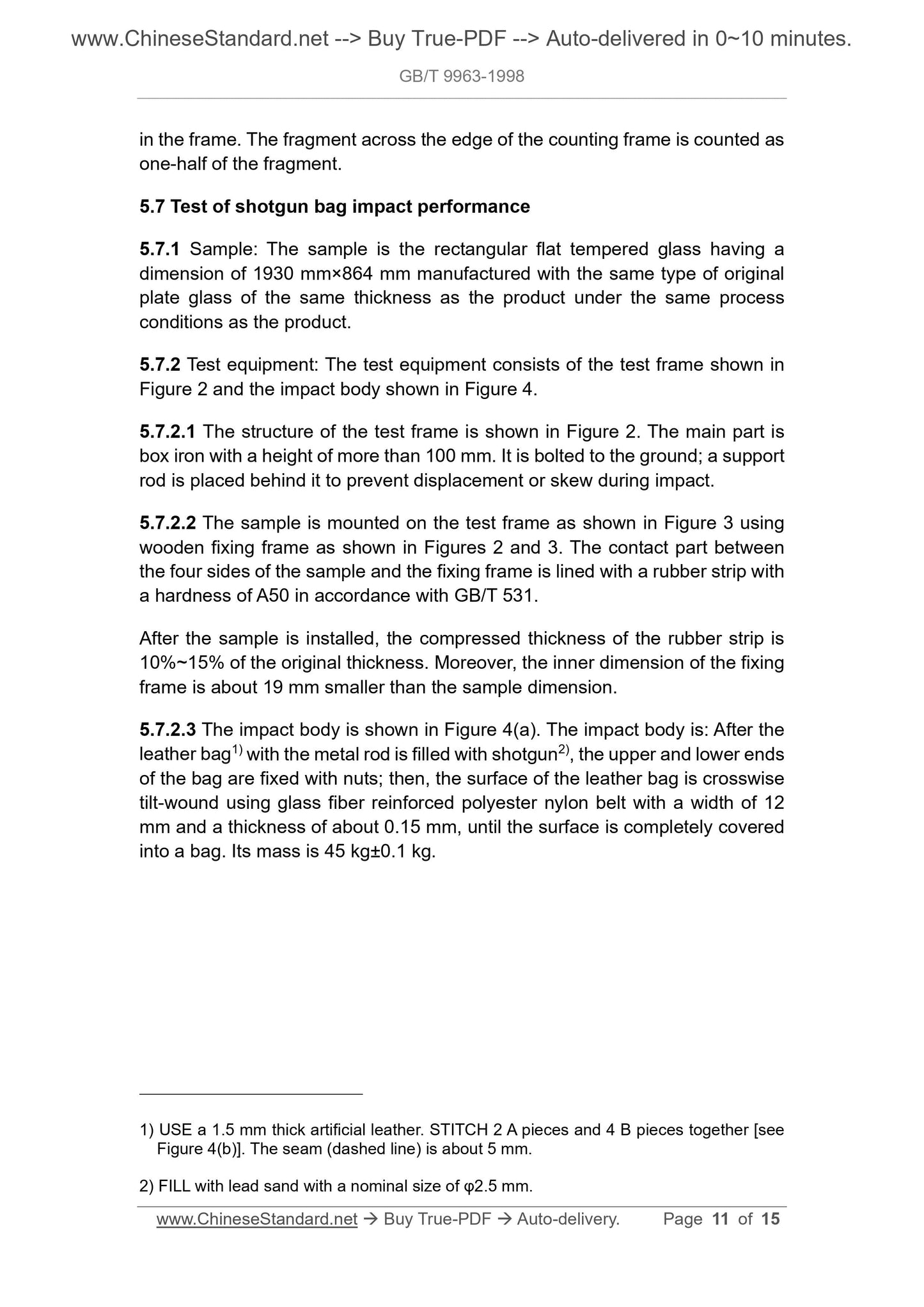1
/
of
6
www.ChineseStandard.us -- Field Test Asia Pte. Ltd.
GB/T 9963-1998 English PDF (GB/T9963-1998)
GB/T 9963-1998 English PDF (GB/T9963-1998)
Regular price
$145.00
Regular price
Sale price
$145.00
Unit price
/
per
Shipping calculated at checkout.
Couldn't load pickup availability
GB/T 9963-1998: Tempered glass
Delivery: 9 seconds. Download (and Email) true-PDF + Invoice.Get Quotation: Click GB/T 9963-1998 (Self-service in 1-minute)
Newer / historical versions: GB/T 9963-1998
Preview True-PDF
Scope
This Standard specifies the classification, technical requirements, inspectionmethods, and inspection rules of tempered glass. It applies to tempered glass
for construction and tempered glass for use other than construction such as
industrial equipment.
Basic Data
| Standard ID | GB/T 9963-1998 (GB/T9963-1998) |
| Description (Translated English) | Tempered glass |
| Sector / Industry | National Standard (Recommended) |
| Classification of Chinese Standard | Q34 |
| Classification of International Standard | 81.040.10 |
| Word Count Estimation | 8,869 |
| Date of Issue | 5/8/1998 |
| Date of Implementation | 12/1/1998 |
| Older Standard (superseded by this standard) | GB 9963-1988 |
| Adopted Standard | JIS R3206-1989, MOD |
| Regulation (derived from) | Announcement of Newly Approved National Standards 2005 No. 11 (No. 85 overall) |
| Issuing agency(ies) | State Quality and Technical Supervision |
Share
